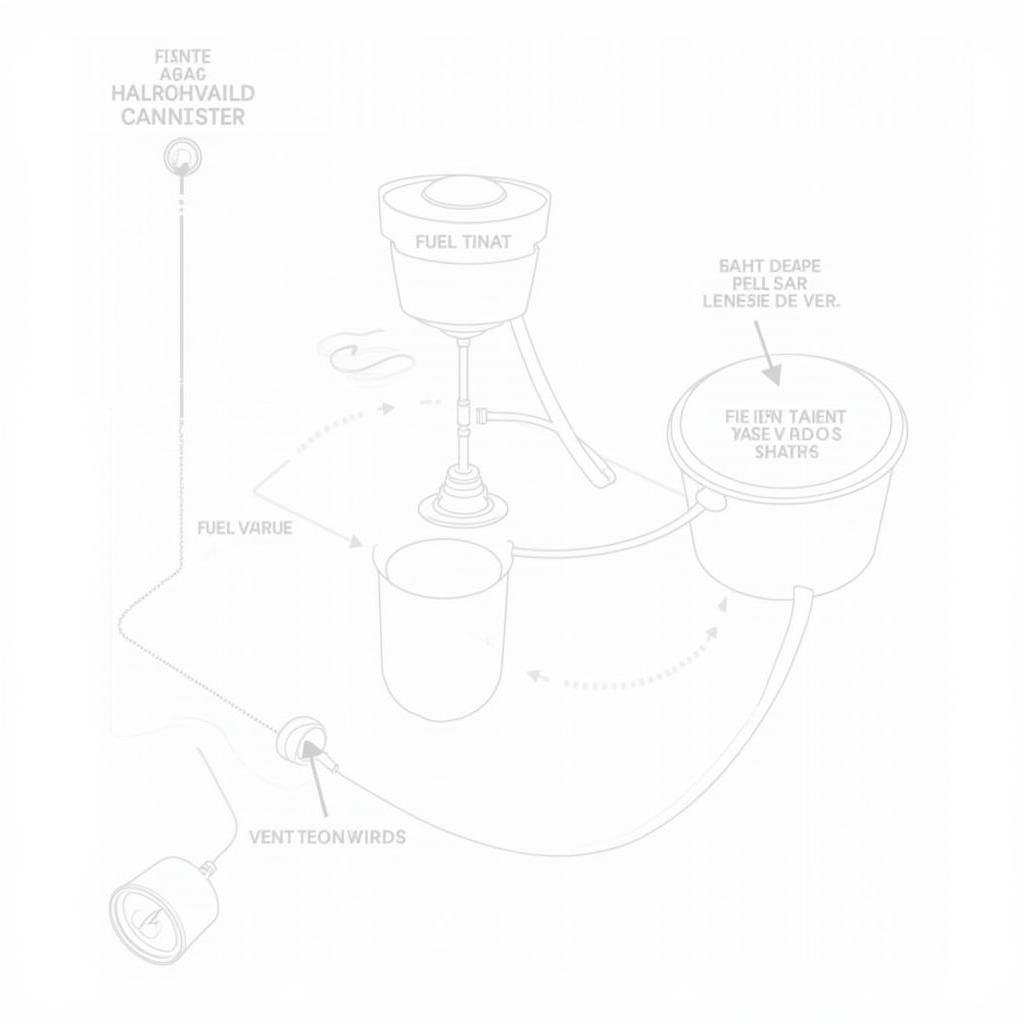Car Nozzle Problems can be a real headache, turning a simple fill-up into a frustrating ordeal. From slow pumping to complete shutdowns, these issues can disrupt your routine and leave you wondering what’s going on under your car’s hood. This guide will dive deep into the common causes of car nozzle problems, offering practical solutions for DIYers and professionals alike. After reading this, you should be able to diagnose and fix many common fuel nozzle issues. If you’ve ever experienced trouble filling your car with fuel, this article is for you.
If you are experiencing car paint problems or issues related to a pressure washed engine of car, please refer to our dedicated resources on those topics.
Common Causes of Car Nozzle Problems
Several factors can contribute to car nozzle problems. Understanding these can help you pinpoint the source of the issue and determine the best course of action. These issues can range from a simple blockage in the fuel filler neck to more complex problems with the car’s evaporative emissions system.
Fuel Filler Neck Obstructions
One of the most common culprits is a blockage in the fuel filler neck. This can be caused by debris, rust, or even a misplaced fuel cap tether. A simple visual inspection can often reveal this issue.
Vent System Malfunctions
A malfunctioning vent system can also prevent the nozzle from functioning correctly. The vent system allows air to escape from the tank as fuel enters, preventing a vacuum that can stop the flow. A blocked vent line can create pressure buildup, causing the nozzle to click off prematurely.
Nozzle Issues
Sometimes, the problem isn’t with your car, but with the gas station nozzle itself. A faulty nozzle can cause slow pumping or prevent fuel from flowing altogether. Trying a different pump or gas station can help determine if this is the case.
Evaporative Emission Control System (EVAP) Problems
The EVAP system prevents fuel vapors from escaping into the atmosphere. A faulty component within this system, such as a charcoal canister or vent valve, can interfere with the refueling process. Diagnosing EVAP issues can be more complex and may require specialized tools.
Fuel Pump Nozzle Issues
Occasionally, the issue might lie with the fuel pump nozzle itself. If you’re experiencing problems filling car with fuel at multiple gas stations, it’s unlikely that every nozzle is faulty. However, it’s worth trying a different pump or station to rule out this possibility.
 Evaporative Emission Control System Diagram
Evaporative Emission Control System Diagram
Troubleshooting and Repairing Car Nozzle Problems
Now that we’ve identified some common causes, let’s explore how to troubleshoot and fix these issues.
DIY Solutions for Simple Problems
- Check the Fuel Cap: Ensure the fuel cap is properly tightened. A loose or missing cap can trigger the “check engine” light and interfere with refueling.
- Inspect the Fuel Filler Neck: Look for any visible obstructions. You might be surprised what you find!
- Try a Different Nozzle/Pump/Station: This will help isolate whether the problem is with your car or the gas station equipment.
- Check for Kinks in the Fuel Line: A kinked or pinched fuel line can restrict fuel flow.
- Consider using Car Gas Tank Filling Problems DIY guides: For some basic issues, online DIY resources can provide step-by-step instructions. You can find some helpful information on our site regarding car gas tank filling problems diy.
Professional Repairs for Complex Problems
For more complex problems like EVAP system malfunctions or issues requiring specialized tools, seeking professional help is recommended. A qualified mechanic can diagnose the problem accurately and perform the necessary repairs.
“Regular maintenance is key to preventing many car nozzle problems. A simple check-up can save you time, money, and frustration down the road.” – John Smith, Automotive Engineer
Conclusion
Car nozzle problems can range from minor annoyances to significant mechanical issues. By understanding the common causes and following the troubleshooting steps outlined in this guide, you can often resolve these problems yourself or know when to seek professional assistance. Remember, addressing these issues promptly not only ensures smooth refueling but also contributes to the overall health and longevity of your vehicle. Don’t hesitate to contact us at AutoTipPro for further assistance. Our phone number is +1 (641) 206-8880, and our office is located at 500 N St Mary’s St, San Antonio, TX 78205, United States. We can also help you with problems related to a 1998 Lincoln Town Car fuel fill.
“Addressing car nozzle problems early on can prevent more serious issues from developing, saving you money and headaches in the long run.” – Jane Doe, Certified Mechanic
FAQ
-
What should I do if the nozzle keeps clicking off? Try repositioning the nozzle or using a different pump. If the problem persists, there may be a vent system issue.
-
Can a bad fuel cap cause nozzle problems? Yes, a loose, damaged, or missing fuel cap can disrupt the refueling process.
-
How can I prevent car nozzle problems? Regular maintenance, including fuel system inspections, can help prevent many common issues.
-
Is it safe to drive with car nozzle problems? If you’re experiencing difficulties refueling, it’s best to have the problem checked out by a mechanic.
-
How much does it cost to fix car nozzle problems? The cost of repairs depends on the specific issue and can range from a few dollars for a new fuel cap to several hundred dollars for more complex repairs.
-
What is the most common cause of slow pumping? A blocked fuel filler neck or a malfunctioning vent system is often the culprit.
-
Can I fix EVAP system problems myself? While some minor EVAP issues can be addressed with DIY solutions, more complex problems usually require professional attention.




Leave a Reply